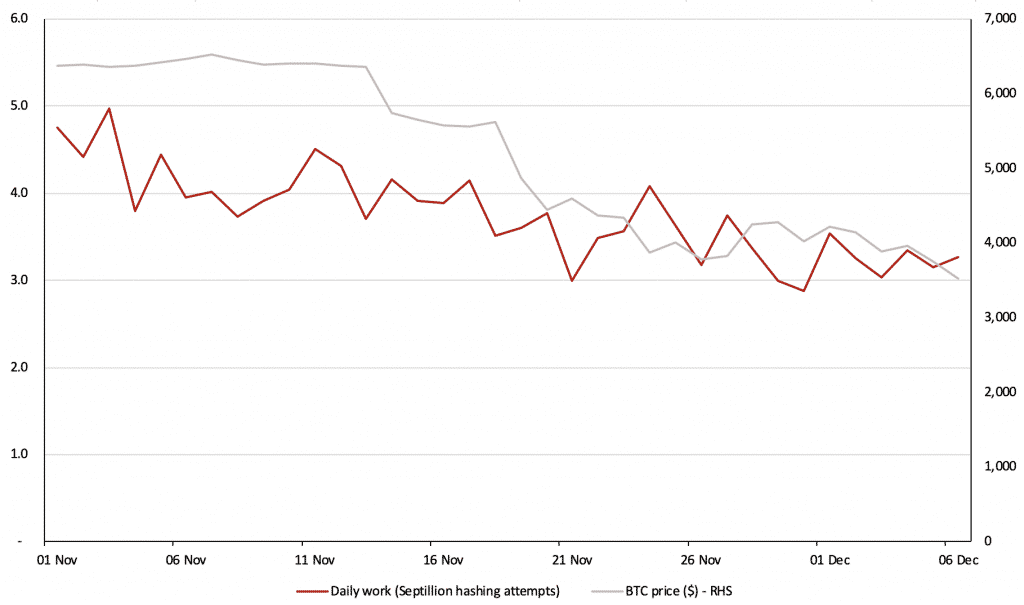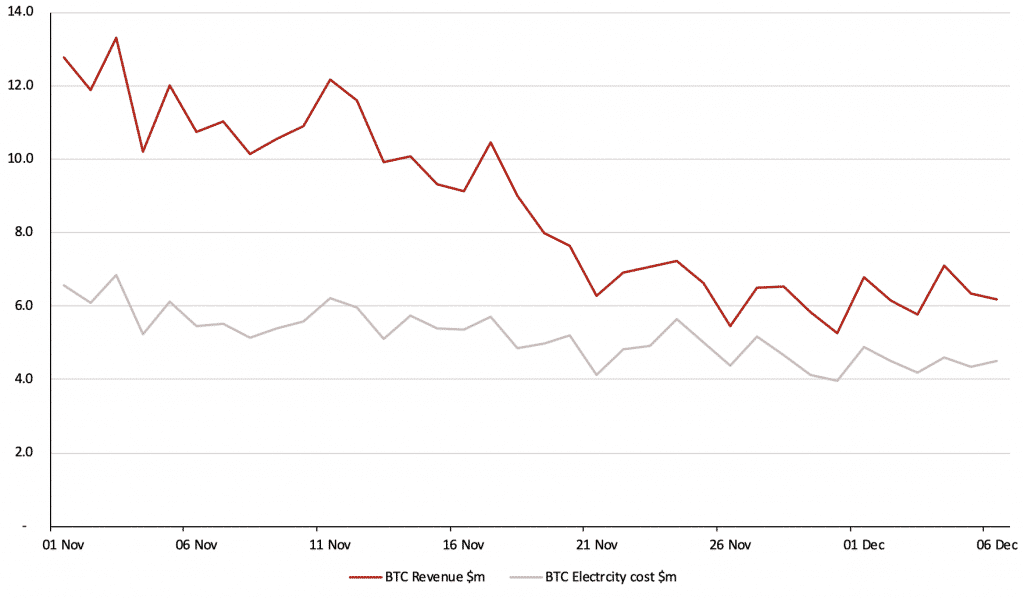For much of the year, the bitcoin mining industry appeared to be impervious to the crypto market downturn, as the flagship cryptocurrency’s hash rate continued to climb even as the BTC price halved — and then halved again. In recent weeks, however, cracks have begun to form in this sector as well.
Bitcoin Hash Rate Drops as Miners Turn off Older Devices
Earlier this month, Bitcoin network difficulty, which adjusts dynamically every 2,016 blocks (a roughly two-week interval) in response to hash rate fluctuations, fell by 15.1 percent — its second-largest drop in history and the greatest since Oct. 2011. Just one period earlier, BTC difficulty declined by 7.4 percent, which was the most significant drop in nearly six years.

While this does not, as some bears have suggested, mean that bitcoin has begun a death march, it does demonstrate the extent to which the downturn has begun to put the squeeze on miners with higher costs and thinner profit margins, many of whom had anticipated a crypto market that would look very different heading into 2019.
According to BitMEX Research, the Bitcoin hash rate has declined by more than 31 percent since the beginning of November, which is the equivalent of 1.3 million Antminer S9 miners being switched off completely.
CCN previously reported that while miner overhead varies wildly based on the size of the operation, energy costs, and other factors, the market decline had hastened the obsolescence of older miner models such as the Antminer S7, which for most users are now little more than expensive paperweights.
Miner Revenue Falling Faster Than Bitcoin Price
Notably, the recent market sell-off has hurt miners even more than ordinary investors. BitMEX Research estimates that cumulative bitcoin mining revenue has declined to $6 million per day at the start of December from $13 million at the start of November, outpacing the bitcoin price’s already-steep decline.”

The reason for this is that because network difficulty adjusts at set intervals rather than in real time, a hash rate drop will reduce the number of found blocks until the beginning of the next difficulty adjustment.
As the report explained:
“In the six-day period ending 3rd December, 21.8% fewer blocks than the expected 144 per day were found, as miners left the network before the difficulty adjusted, and as a result, fewer blocks were found. Therefore in the short term, there was a 21.8% fall in mining incentives on top of the impact of the declining price.”
At this point, BitMEX Research estimates that almost all cryptocurrency miners — regardless of scale and overhead — are operating at a loss, though some may have hedged profits or at least trimmed losses by shorting the bitcoin price throughout the year.
Not a ‘Death Spiral’
According to some analysts, this likely means that Bitcoin has entered the outer ring of a “death spiral,” wherein it endures a vicious cycle of miners turning off their machines before the difficulty can adjust lower, preventing the network from processing blocks at regular, 10-minute intervals and further prolonging the interval between difficulty adjustments.
Thankfully, as Andreas Antonopoulos recently explained, these ominous predictions fail to account for the fact that most miners are heavily invested in the cryptocurrency industry and thus operate with a long-term perspective that recognizes they may have to temporarily mine at a loss in pursuit of greater profits in the future.
“Part of the reason that’s unlikely to happen is that miners have a much more long-term perspective, meaning that they have existing investments in equipment and they usually purchase electricity on long-term plans, they don’t pay it by the week,” he said. “And therefore, if they have to wait to become profitable another three months and they have the equipment in place, they’re not turning it off.”
Consequently, the mining industry’s current struggles shouldn’t have any long-term impact on Bitcoin itself, though that doesn’t make things any easier for the individual cryptocurrency mining firms that must navigate this increasingly rocky landscape.
Featured Image from Shutterstock
Get Exclusive Crypto Analysis by Professional Traders and Investors on Hacked.com. Sign up now and get the first month for free. Click here.




